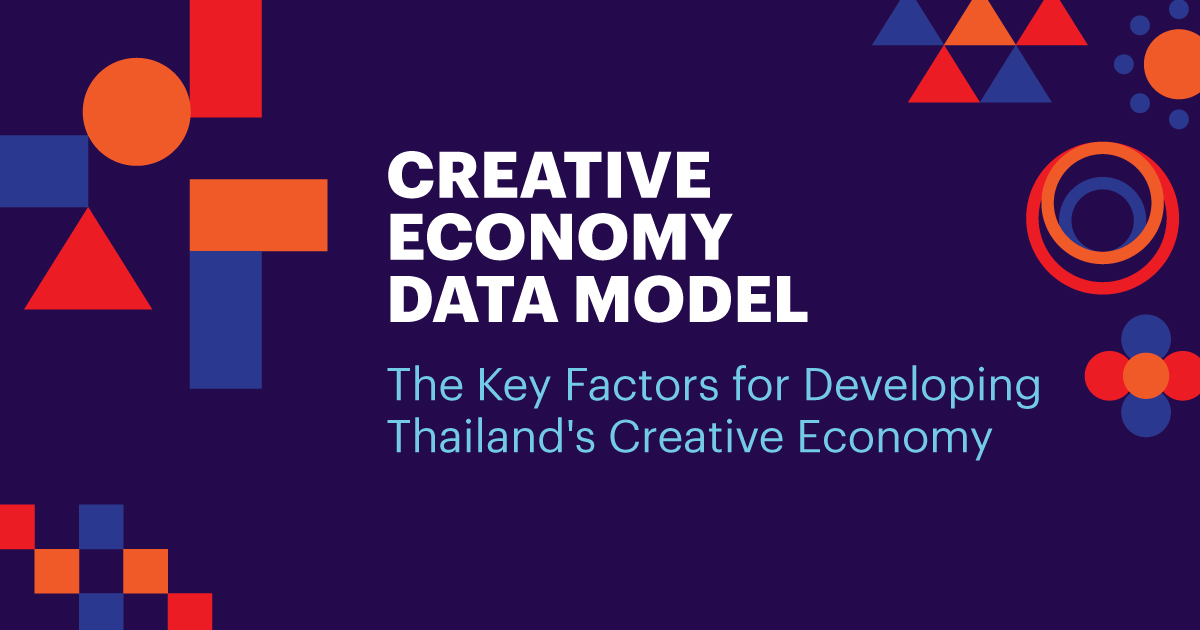Creative Economy Data Model: The Key Factors for Developing Thailand's Creative Economy

The World Intellectual Property Organization (WIPO), in collaboration with the Creative Economy Agency (Public Organization) or CEA, the Department of Intellectual Property (DIP), and relevant agencies, organized a conference on the Creative Economy Data Model (CEDM) between 19 - 20 March 2025. This international gathering served as a crucial platform for exchanging progress on the development of the CEDM and its application at the national and regional levels, which will lead to sustainable economic development and opportunities for all sectors in the future.
WIPO has initiated the development and pilot testing of the CEDM in several countries since 2024. Participating countries include the Philippines, Azerbaijan, Trinidad and Tobago, and Thailand. Furthermore, numerous countries are under consideration for CEDM implementation in 2025, such as the United Arab Emirates, Kyrgyzstan, Indonesia, Nigeria, Chile, Costa Rica, China, India, Turkey, Colombia, Uruguay, South Africa, Ivory Coast, Kenya, Finland, Uzbekistan, Saudi Arabia, and Kazakhstan. WIPO is also in the process of establishing a MOU with ASEAN to expand the utilization of the model at the regional level.
CEDM Structure
The CEDM structure has two main components: the Creative Landscape Analysis, which uses national-level data from secondary sources, and the Creative Ecosystem Index, which collects data at the regional level. This may require additional primary data collection through surveys and collaboration with each country's national statistics office.
Creative Economy Ecosystem and the Measurement
The measurement of the creative economy ecosystem is divided into two main components: input measurement and output measurement. Inputs include institution factors such as the legal and institutional environment, social and cultural values, and institutional networks, as well as resource factors such as knowledge and talents, infrastructure, access to finance, and economic demand. Outputs focus on measuring the value generated by creative industries relative to a country's GDP, employment rates in creative industries, and intellectual property-related outcomes."
The Development of Indicators and Indices
According to the conference, over 90 indicators have been developed for the CEDM, revealed by representatives from WIPO. However, their practical application in each country will depend on data availability and the reliability of data sources. Some indicators may need to be adjusted to suit the specific context of each country. Additionally, an Input Index is being developed, which is divided into two types: the Additive Input Index and the Multiplicative Input Index, to facilitate the comparison of data between regions within a country.
Thailand's Next Steps with CEDM
The conference proposed that the Creative Economy Agency (Public Organization) or CEA serves as the primary agency for coordinating with domestic agencies and WIPO in the further development and implementation of the CEDM index. In the initial phase, the CEA will explore the existing data for use in the Creative Landscape Analysis and plan for additional data collection to develop the Creative Ecosystem Index. This conference marks a significant step in developing policy tools for the creative economy, which will enable countries to more effectively measure and develop insights into their creative industries. Once Thailand can proactively adopt the Creative Economy Data Model (CEDM), it will be a crucial step in elevating Thailand's creative economy to the regional level. By using data-driven approaches, Thailand can design responsive policies, create opportunities for entrepreneurs, and enhance its international competitiveness, leading to sustainable economic development and opportunities for all sectors in the future.
Posted in news-en on เม.ย. 09, 2025